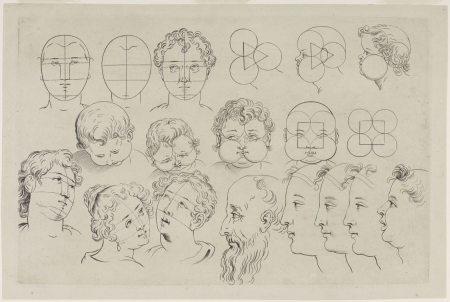Visual Name Authority: a collaborative approach to person identification management
Artificial intelligence is a hot topic, and at meemoo we’re not shy about embracing it. Consider the FAME research project, for example, and the application of speech recognition, entity recognition and facial recognition in the GIVE project, or the Shared AI media project, and you’ll see it’s clear that AI is here to stay! But there are still many obstacles in the way that can slow things down. So, to pave the way for future projects aimed at creating or enriching descriptive metadata, we’re joining forces with 24 partners to build a Visual Name Authority.
Challenge
Descriptive data – or metadata – is essential for the effective findability and searchability of digital heritage collections. This includes personal names, titles, dates and locations that greatly simplify your search through (digital) collections. Personal names, in particular, are often the starting point of a search. So the need for more and better metadata is clear, but this metadata also needs to be unambiguous: if you’re looking for a photo of the billiards player Eddy Merckx, you don’t want to find photos or videos of the cyclist Eddy Merckx, for example! To avoid confusion, it’s therefore best to link personal names to an authority file. These reliable sources contain additional biographical information, ensuring a person is identified unequivocally.

Pictured: Studiehoofden (‘Study Heads’), collection KMSKA (Royal Museum of Fine Arts Antwerp), artinflanders.be, photo: Dominique Provost, public domain.
Information is currently often fragmented across authorities in various sub-fields, requiring the use of multiple sources. This is not very straightforward! And furthermore, many lists of personal names are also not available online for third parties – or not every personal name has been assigned a persistent identifier, which is necessary for creating sustainable links. Additionally, for the application of facial recognition, a good reference set of portrait photos is needed to link detected faces to a name. Such a reference set, relevant to a wide range of collections in the Flemish cultural heritage sector, is currently lacking.
These significant limitations have become apparent in previous metadata projects, and we are now addressing them in the Visual Name Authority project. With this project, we’re taking a metaphorical step back and ensuring, together with 24 partners from the cultural sector, that the basic information from various existing authorities is brought together under one umbrella. In the context of facial recognition, we’re also linking a small set of portrait photos and facial cut-outs to personal names. At the end of the journey, the end user will also reap the benefits of the visual name authority, as the tool will describe in which photos and videos the individuals appear. These individuals will also be described more unambiguously in the metadata so they are also more findable.
Our role
Meemoo has a coordinating and executive role in the Visual Name Authority project. Our project partners, including cultural archives, heritage libraries and museums, are responsible for:
preparing and providing personal data and portrait photos;
contributing ideas to help run the project successfully;
participating in and guiding working groups and a steering committee;
acting as a bridge to other organisations.
Approach
By creating a visual list of personal names, we’re aiming to use artificial intelligence to facilitate metadata creation and enrichment for heritage organisations, and to improve the findability and searchability of their collections. This visual name authority will consist of:
an overarching list of relevant personal names that are uniquely and unambiguously identified and linked to existing authorities;
the creation of a shared reference set of portrait photos of relevant individuals for facial recognition.
What is an authority?
Authorities – or controlled glossaries – contain a series of consistently used and carefully defined names and subjects. By linking a name or subject to these lists, you ensure there is no confusion between different spellings or aliases, and you add valuable information. This makes the search process much simpler. Examples of well-known authorities include Wikidata, ODIS, RKDartists&, ULAN and VIAF.
In this overarching visual name authority, we will uniquely and persistently identify personal names, and link them to corresponding personal names in local name lists and other external data sources. This will also create interconnections between local name lists and other external data sources, clarifying that the person from one list is the same as from another! A single overarching and linked source will emerge, supplemented with portrait photos. Collaboration is key here, as bringing data together from different partners will make the list much richer.
Phase 1 (September 2023 - August 2024)
In this initial phase, the focus is on conducting a feasibility study, divided into five work packages:
WP 1: a legal and ethical framework;
WP 2: target groups and use cases;
WP 3: name list and book of faces;
WP 4 and 5: the longer term and bigger picture.
A study day is also planned for April 2024.
Phase 2 (September 2024 - August 2025)
A workflow and prototype will be devised in the second phase.
Phase 3 (September 2025 - September 2026)
The prototype will take shape and be developed in the closing phase. Finally, with a view to the future, all results will be sustainably embedded in a larger ecosystem.
Partners
Cultural archives |
|
Heritage Libraries |
|
Museums |
|
Other |
|
